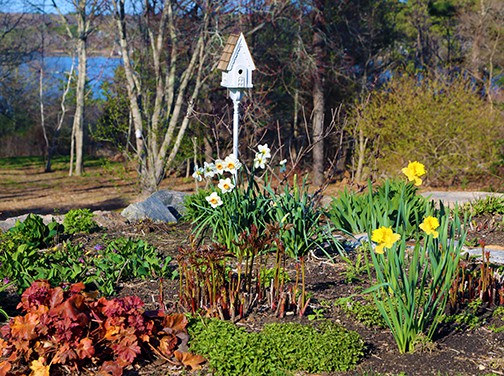A Gardening Life – April 29
I had a crack team of Master Gardeners in my garden today. We were digging up perennial plants and potting them for the Master Gardener Plant sale on May 18th.
Perennial gardeners have to be good editors. Some plants spread, and others die out in the center of clumps and need to be divided in order to renew their vigor. Unless you have a meadow-style garden, the worst thing you can do is to let perennial plants grow unchecked.
We dug dozens of plants today, and I found myself repeatedly saying, “It’s a good plant.” Just because a plant needs occasional attention and isn’t totally low-maintenance doesn’t mean that it’s not desirable. There are many perennials that are wonderful assets in the garden but they can’t be left to their own devices. Some self-seed and others have wanderlust. There comes a point when the expression “too much of a good thing” applies to many sections of the perennial garden.
In all areas of our lives we are constantly working to keep things in balance. We aim for a degree of equilibrium when it comes to juggling work and home life, exercise and rest, healthy food and occasional indulgences. It’s important to bring that same quest for balance into the garden. Constant evaluation and a controlling hand are important.

In the lakeside border I had several patches of Campanula poscharskyana, aka Serbian bell flower, seen here at the bottom of the photo. I love this plant because the low, bright green foliage looks attractive all season before and after bloom. But it does spread, and just because I love small groups of it in the front of the border doesn’t mean that I would love it to dominate this garden.
Sharing the Wealth
Dividing Perennials
- Divide a perennial if the plant starts to form a donut shape with an empty middle. Replant pieces from the outer most growth, and throw the center into the compost pile.
- Divide any perennial that more than doubles its growth every year. These are eager beavers who would just as soon take over your entire garden and they need tough love.
- Edit out perennials that spread so much that there is a great deal of empty space in between their shoots. This type of thin growth allows weeds to get established in the spaces. Don’t hesitate to pull random shoots and consolidate several into a more compressed area.
- When any plant grows completely out of proportion to its neighbors this can throw the garden design out of whack. Just because that perennial wants all the attention, land, nutrients, and water for itself doesn’t mean you have to allow it.
- If you edit or divide a plant this doesn’t mean you have to replant what you dig out or pull. Remember that every piece you put back in the ground will need to be divided again in a few years…do you really want to make more work for yourself in the future just because you couldn’t stand the thought of throwing a plant away?
- If you can’t bring yourself to toss extra plants in the compost, think about donating them. Many non-profits hold plant sales to raise funds, and your extras just might be their salvation.

